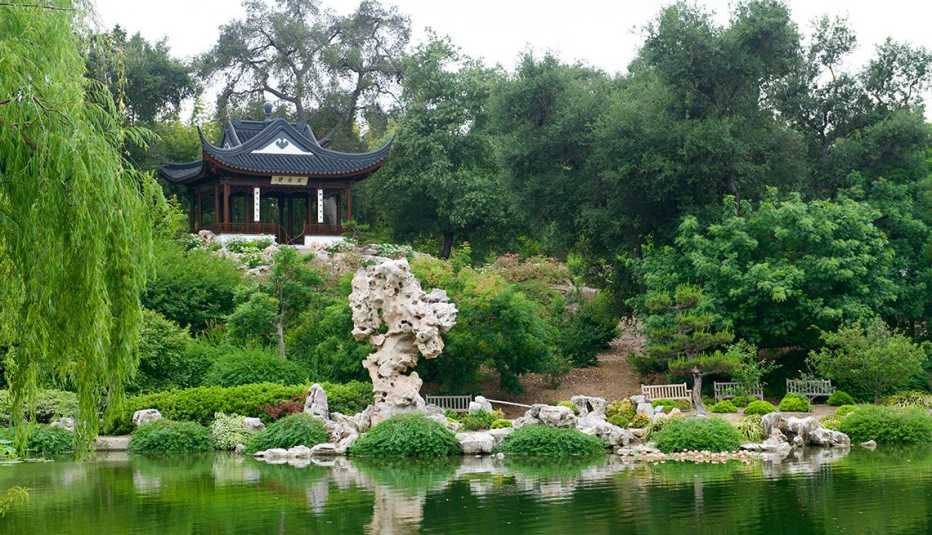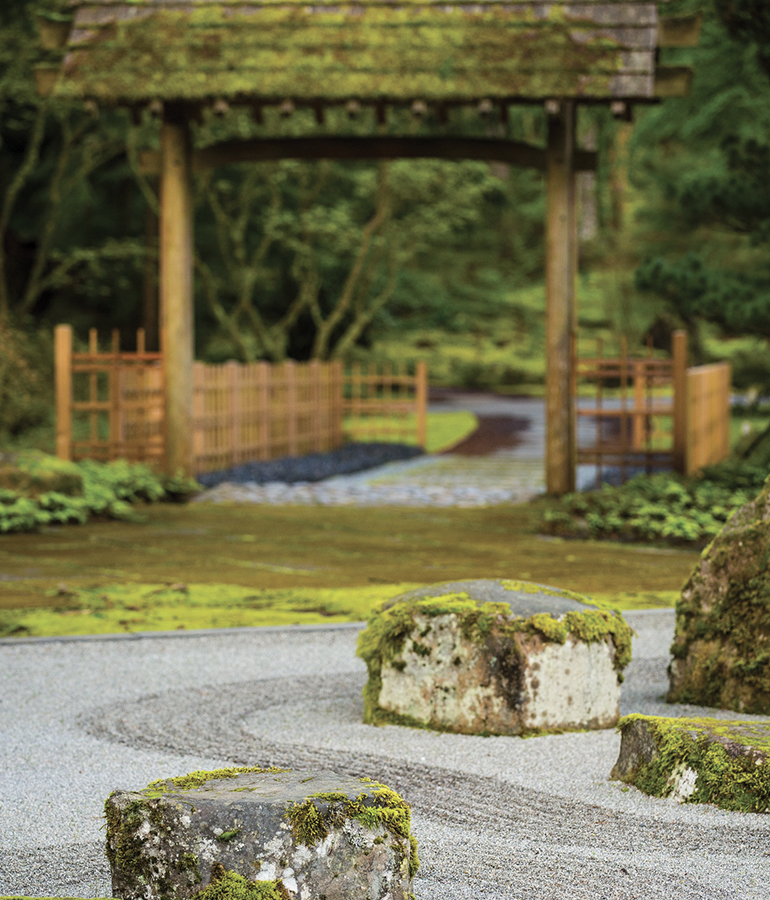AARP Hearing Center


As a nature lover who lives in a big city, I am provided with a lifeline from the steel-and-concrete morass while strolling through the metropolitan gardens in Seattle. I’ve also sojourned far and wide in search of the perfect garden destination. And yet, when I’m traveling for work, I often forget that North America has a stash of green from coast to coast, north to south. That’s because I’m too “on the go” to slow down and disappear among the fronds and too distracted to literally stop and smell the roses (and honeysuckle, and heliotrope). These days, walking through a public garden does more than give me my requisite steps: I reset my psyche while marveling at the genius of its design and placements.
I know I’m not alone. In fact, acclaimed author Andrea Wulf detailed the significant role gardens played in the establishment of the United States. In Founding Gardeners, Wulf depicts George Washington and Thomas Jefferson’s shared horticultural obsession. Their gardening passions would produce much more than the verdant landscapes of Mount Vernon and Monticello. Urban leaders would honor this botanical focus by cultivating magnificent public gardens in American cities.
So allow me to highlight several fantastic public gardens across the continent that are known equally for beautiful plantings and extensive paths, where you can stretch your legs, log your daily steps, measure your breathing and take a trip back in time. Included is information and insight gathered from experts describing each garden’s mystique, beginning with Wulf.
A nod to history
I ask the best-selling author, whose newest work, Magnificent Rebels: The First Romantics and the Invention of the Self, will be published in September, to identify her favorite North American public gardens. “Oh, that’s a difficult question — too much choice,” Wulf says. “But I think I’ll go for Jefferson’s Monticello and glorious Middleton Place [outside of Charleston], South Carolina. Jefferson created a garden that was an expression of his vision of America. It brings together the sublime vastness of America’s landscape with the productivity of the land. And Middleton Place — what a spectacular space. The grand formal Butterfly Lakes there never fail to blow my mind. But what is even more impressive is that this was one of the first plantations that didn’t shy away from including the stories of the enslaved workers into their history and visitor experience.”
Wulf adds that walking through Monticello provides as much insight into Jefferson as reading his letters. She says that because several of the country’s historical gardens are older than America itself, landscape architecture evokes history better than most buildings and other artifacts.
“Gardens are windows into the world of science, culture and politics,” she says. “The Founding Fathers created gardens as a political statement, planting native species to illustrate America’s independence.”
Unlike the many landmarks we rarely visit unless guests are in town, public gardens and parks draw residents and out-of-town visitors in equal measure. For 20 years, I’ve recommended the same itinerary for the best Seattle day, one that takes you to my hometown garden: Skip the Space Needle, bypass Pike Place Market and head to the Bainbridge Island ferry, which departs every hour from Colman Dock, Pier 52, on the Seattle waterfront.


Bainbridge Island is home to Bloedel Reserve, a 150-acre wooded former estate that exemplifies Pacific Northwest garden design, a seamless blend of native species, natural habitats and Asian influence. Located 6 miles from the Winslow ferry terminal, Bloedel’s paths include a 2-mile loop to Rhododendron Glen, Buxton Bird Marsh & Meadow, and 21 other landscapes.
When I’m here, I save the most time for the Japanese Garden. I can’t get enough of the rock-pine-maple visual drama playing out in beautiful detail above the small pond. The Japanese black, white and red pine candles (leaves) clump delicately together on well-pruned limbs, a visual narrative that makes me want to unfurl parchment, compose and illustrate haiku.
The gardens also energize me and get my adrenaline flowing. Once centered, the idea is to get my heart rate up by speed walking around the ponds, then cool down by strolling through the Moss Garden.
Northwest themes are exemplified in the Moss Garden. Regional gardeners often do battle with moss, but this is a rare intentional planting where mosses and liverworts are encouraged to thrive in the perpetually damp temperate rainforest conditions. The garden was established in the early 1980s when over 275,000 1-inch-square Irish moss starts were planted. Native mosses soon moved in, and colonized the site within five years. The Japanese Garden and the Moss Garden are just two of the reasons visitors here are left speechless, says Etta Lilienthal, a spokesperson for the reserve.































.jpg?crop=true&anchor=13,195&q=80&color=ffffffff&u=lywnjt&w=2008&h=1154)
































More Members Only Access